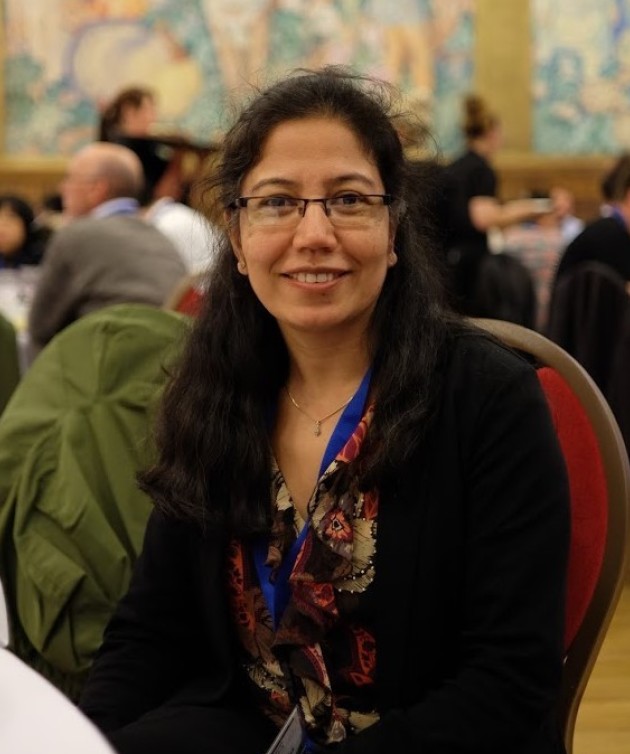Allotments at Silwood Park Campus
Silwood Park has a rich history when it comes to food self-sufficiency ever since the first students arrived in 1947. Now staff and students can get involved in starting their own allotment plot. Hear from four staff allotment owners on their experiences below.

(Clockwise: staff allotment users, Ro’s plot, produce from the staff plots, Andrew Greig’s plot)
Andrew Greig, Campus Services Coordinator
“I had looked on enviously at the allotment shenanigans of Silwoodians for a number of years as they dedicatedly grew their wares, whilst never really thinking too much of actually getting a plot myself. Then last year, having reached an age suitable for allotmenting and with the allotment changing to a bigger site in Silwood, I decided to join in the fun and get my own plot.
But what to grow? I am no gourmet chef and ashamedly not a huge eater of veg, maybe this was a time to grow my veg eating repartee! No, I went with home staples of potatoes, tomatoes, sweetcorn, lettuce, onions and some beetroot. And it was all a flaming success in the long hot summer of 2022, with it all doing fabulously and tasting amazing! I thought I must be the secret lovechild of Percy Thrower and Monty Don! Fast forward to 2023 and clearly they only adopted me. This year the potatoes were delicious again, but so many of my endeavours failed to get off the ground- peas, broccoli, cabbage all failed to materialise whilst the weeds have had a field day.
My best success this year has been the bench which I made from an old pallet and that I seemed to have used too much instead of weeding. Still, I’m already planning for 2024.”
Katie Willis, Research Associate (DoLS) and Tom Richards, Village Assistant Supervisor
“We began running the allotments when we first arrived to live on campus in 2017. Since then we have tried our hand at growing peas, beans, sweetcorn, squash, cabbage, kale, broccoli, onions, potatoes, tomatoes, cucumbers, pumpkins and lots and lots of courgettes! The allotments have given many staff and students the opportunity to try something new, providing a great excuse to get out into the open and meet new people. We have also taken part in Mental Health Awareness week, giving students from other campuses a chance to escape from the big smoke for an afternoon of gardening, an activity we hope to grow in the future.”
Anthony Fitzgerald, Departmental Manager in Dept of Life Sciences (DoLS)
“Having started my growing experience during lockdown with a small veg patch in the corner of my garden I jumped at the opportunity to have an allotment plot at Silwood when they were relocated to Hill Bottom. With two teenage sons a patch full of King Edward’s potatoes is a must, along with sweetcorn and tomatoes.”
Emma Sharp, Project Manager in Faculty of Natural Sciences
“I have had an allotment at Silwood for two years now and have already learnt a lot from other allotment users and some trial and error with plant placement and netting. Along with the benefits of fresh air and fresh veg, weeding gives me the opportunity for some good thinking time or even just a short screen break on a busy day. I have mostly grown peas, beans and cabbages so far but have tried celery and beetroot this year. I have two guinea-pigs who also benefit and reduce any potential waste – they are particularly fond of the sweetcorn leaves grown by my colleagues.”

Want to learn more?
The History of Silwood Park’s quest for food self-sufficiency and the start of its allotments
When the first students arrived at Silwood in 1947 the country had just endured the worst winter anyone could remember (January to March) which had destroyed a huge fraction of the country’s stock of stored potatoes.
To make matters worse, the country was still in the full grip of post-war rationing with food, sugar, petrol and coal all in very limited supply. Private motorists were unable to drive more than about 22 miles per week, which made the 702 Green Line Bus from Silwood to South Kensington so important to Munro when Silwood was purchased for the College.
The other thing to remember about these early days was that all of the students ate all of their meals in the Refectory. There were no cooking facilities in the student accommodation in the top storey of the Manor House.
All this meant that the Silwood community needed to be essentially self-sufficient for food. There was a substantial acreage given over to production of vegetables and potatoes in the fields on either side of the Warden’s House in Silwood Lodge at Drive Field and Lodge Field (now the Tractors sheds). Pigs were kept, but there is no record of any dairy cows at Silwood (though there were at Silwood Farm). This tradition of food self-sufficiency, tended by the students in concert with the (then) substantial garden staff (13 men plus a superintendent) carried on well into the 1960s.
Allotments specifically for the students to practice their horticultural skills were not introduced until the mid-1980s when a central section of Ashurst Four Acre Field was fenced off and made rabbit- and deer-proof. The area was shifted within Four Acre field after 5 years to alleviated pest and weed problems. In the early 1990s the students pressed for the allotments to be shifted closer to the (then new) Residences, and a fence was erected in the south-west corner of Hill Bottom. The current allotments in the centre of Hill Bottom were built in 2018, after the earlier site became overgrown by Raspberries, Brambles and Tansy.
Information provided by Mick Crawley, former Campus Dean for Silwood Park.
